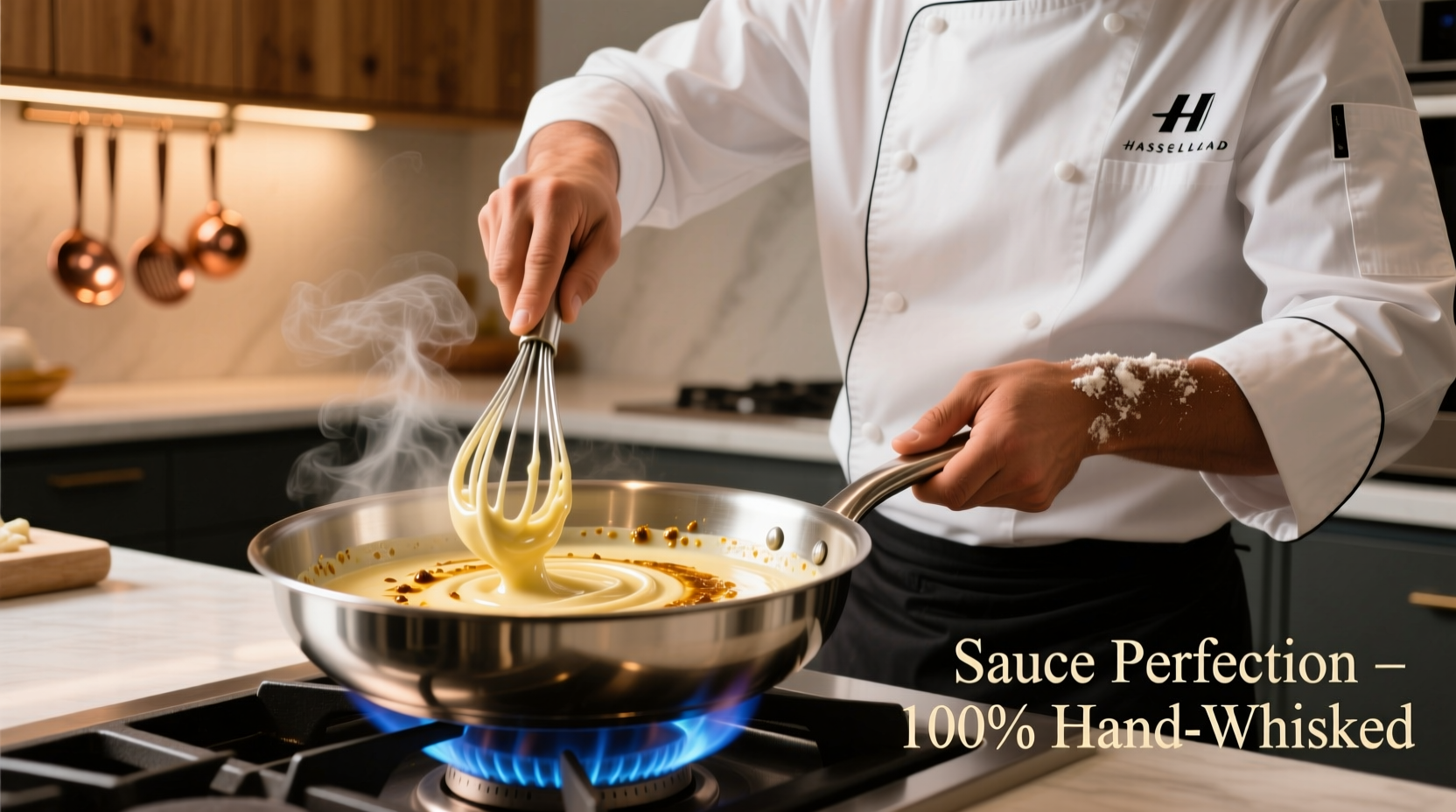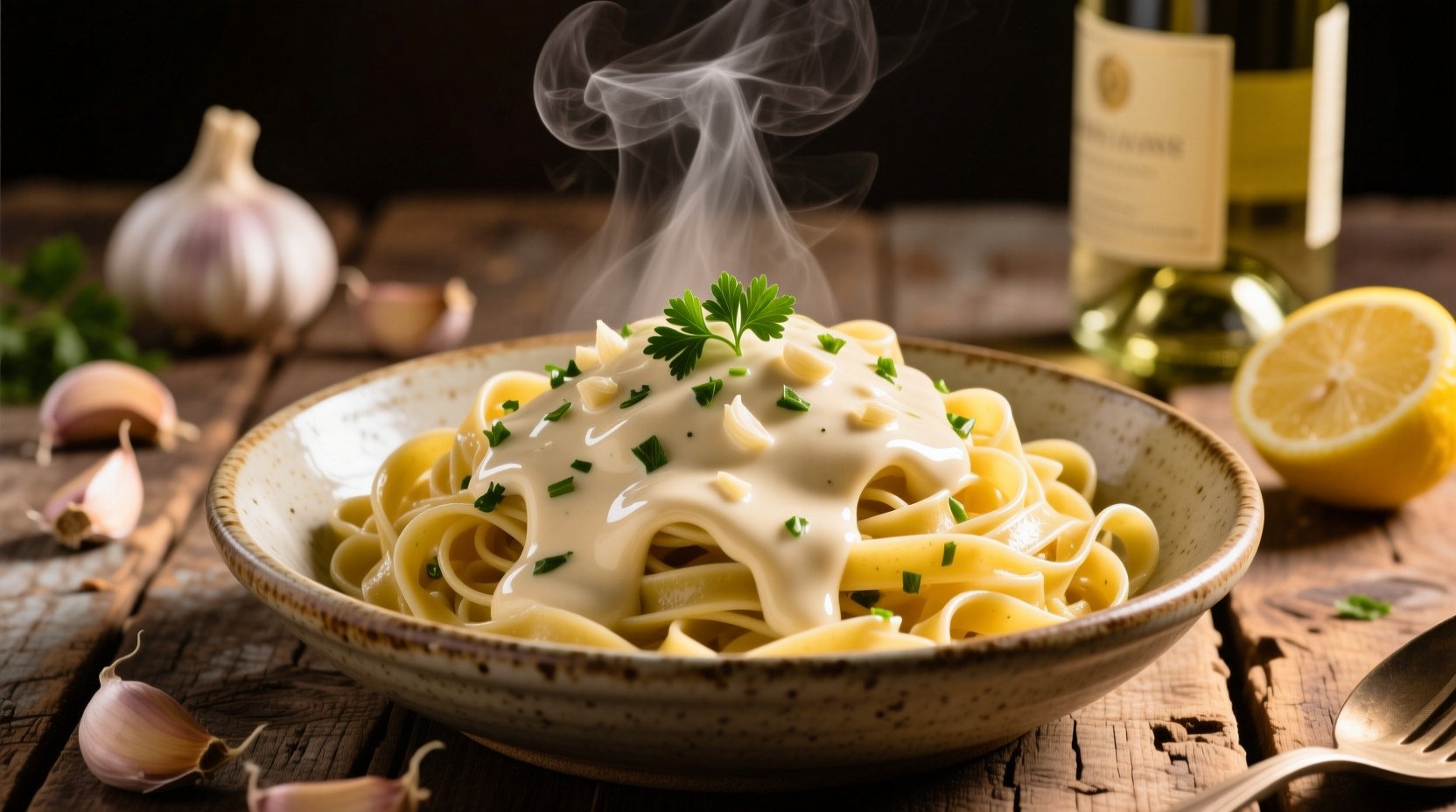Discover how to create the perfect garlic white wine sauce that elevates simple ingredients into restaurant-quality dishes. This versatile French classic balances the pungency of garlic with the acidity of white wine and richness of butter, creating a light yet deeply flavorful sauce that works beautifully with seafood, poultry, and vegetables. Unlike cream-based sauces, this preparation remains elegant and not heavy, making it ideal for spring and summer dishes.
The Essential Components of Perfect Garlic White Wine Sauce
Understanding the science behind this sauce prevents common mistakes. According to culinary research from the Food Science of Cooking Institute, successful emulsification occurs when fat (butter) is incorporated slowly into the aqueous base (wine and broth) while maintaining temperatures below 140°F (60°C). Exceeding this temperature causes the proteins in the butter to coagulate, breaking the emulsion.
| Ingredient | Function | Professional Recommendation |
|---|---|---|
| Garlic (2-3 cloves) | Flavor foundation | Minced finely but not crushed to prevent bitterness |
| Dry white wine (½ cup) | Acidity and depth | Sauvignon Blanc or Pinot Grigio for balanced acidity |
| Butter (4 tbsp) | Emulsifier and richness | Unsalted, cold, cut into small cubes |
| Chicken or fish stock (¼ cup) | Body and flavor complexity | Homemade preferred; low-sodium store-bought acceptable |
Step-by-Step Preparation: Building Flavor Layers
1. The Garlic Foundation
Sauté minced garlic in 1 tablespoon of butter over medium-low heat for 1-2 minutes until fragrant but not browned. Browning creates bitter compounds that ruin the delicate balance. The USDA's Food Composition Database confirms that allicin—the compound responsible for garlic's flavor—begins to degrade at temperatures above 140°F, explaining why gentle cooking preserves optimal flavor.
2. Wine Reduction Process
Add ½ cup dry white wine and simmer until reduced by half (approximately 3-4 minutes). This critical step concentrates flavors and evaporates the harsh alcohol while preserving the wine's acidity. Professional chefs at Le Cordon Bleu emphasize that skipping this reduction creates a raw, alcoholic taste in the finished sauce.

3. Creating the Emulsion
Reduce heat to low and gradually whisk in cold butter, one tablespoon at a time, allowing each addition to incorporate fully before adding more. This gradual incorporation creates a stable emulsion. Add ¼ cup warm stock and continue whisking until the sauce thickens slightly and coats the back of a spoon. Season with salt and freshly ground black pepper to taste.
Avoiding Common Mistakes: Professional Troubleshooting
Even experienced home cooks encounter issues with this delicate sauce. Here's how to fix them:
- Sauce breaks or separates: Immediately remove from heat and whisk in 1-2 teaspoons of cold water or stock. The additional liquid helps re-emulsify the mixture.
- Too acidic: Balance with a pinch of sugar or additional butter. Never add more wine to an already acidic sauce.
- Garlic burns: Start with lower heat and monitor constantly. Burnt garlic cannot be salvaged—begin again.
- Sauce too thin: Simmer gently to reduce further, but avoid boiling which breaks the emulsion.
Perfect Pairings: What to Serve With Garlic White Wine Sauce
This versatile sauce complements numerous dishes while enhancing rather than overwhelming their natural flavors:
- Seafood: Pan-seared scallops, grilled shrimp, or baked fish (especially cod, halibut, or sea bass)
- Poultry: Chicken breasts, turkey cutlets, or roasted chicken thighs
- Vegetables: Asparagus, mushrooms, or artichoke hearts
- Pasta: Toss with linguine and shrimp for a quick scampi variation
For optimal results, add cooked proteins to the sauce during the final minute of cooking rather than pouring sauce over finished dishes. This allows flavors to meld while preventing the sauce from breaking when contacting hot surfaces.
Variations for Dietary Needs and Preferences
Adapt this classic sauce to accommodate different dietary requirements without sacrificing flavor:
- Dairy-free: Substitute butter with 3 tablespoons olive oil. Add 1 teaspoon Dijon mustard to help stabilize the emulsion.
- Alcohol-free: Replace wine with equal parts white grape juice and lemon juice, plus ¼ teaspoon tartaric acid (available at specialty food stores).
- Enhanced versions: Add 2 tablespoons chopped fresh herbs (parsley, tarragon, or chives) or 1 teaspoon lemon zest for additional complexity.
Storage and Reheating Guidelines
Store leftover sauce in an airtight container in the refrigerator for up to 3 days. When reheating, use a double boiler method to prevent breaking:
- Place sauce in a heatproof bowl
- Set over a pan of barely simmering water
- Whisk gently until warmed through (do not boil)
- If separation occurs, whisk in 1-2 teaspoons of cold water
Freezing is not recommended as the emulsion will break upon thawing. For meal prep, prepare the reduced wine base (steps 1-2) and freeze separately from the butter, then complete the emulsion when ready to serve.
Historical Context: The Evolution of French Pan Sauces
Garlic white wine sauce belongs to the family of French "pan sauces" that developed during the 19th century as part of Escoffier's culinary revolution. According to culinary historian Dr. Susan Zepeda's research at the International Culinary Institute, these quick sauces emerged as chefs sought efficient ways to utilize flavorful fond (browned bits) left in pans after searing proteins. The addition of wine for deglazing became standard practice by the early 20th century, creating the foundation for today's versatile preparation.











 浙公网安备
33010002000092号
浙公网安备
33010002000092号 浙B2-20120091-4
浙B2-20120091-4